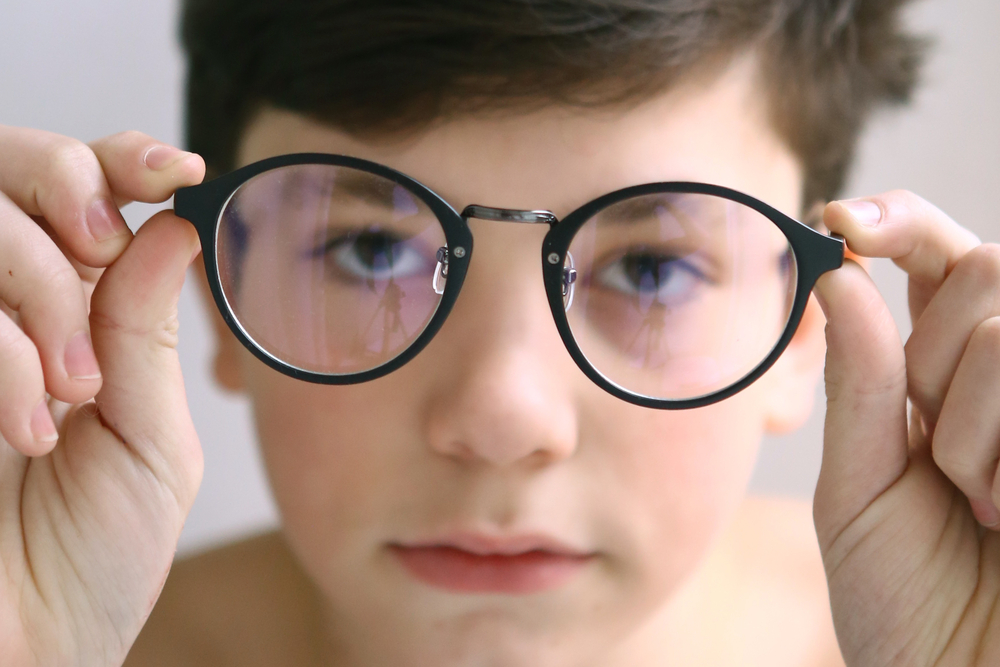Myopia | Nearsightedness | Bloemfontein Optometrist

Myopia | Nearsightedness
The Myopia population is growing, with more than 2.7 billion people estimated to have myopia in 2030. By 2050, half the population is estimated to be myopic.
This is a growing trend with changing lifestyles as more time is spent on near activities. There is also a growing prevalence of myopia in children.
Can we do something about this?
Introducing the MiYosmart lens with D.I.M.S. technology from Hoya.
A child friendly, safe, easy to use, effective non-invasive method to manage myopia.
It is proven in a 2-year clinical wearer trial to have
- Slowed down myopia progression by 59%
- Reduced axial elongation by 60%
What is Myopia?
Myopia is a refractive condition where a person cannot see clearly when viewing objects in the distance.
What causes Myopia?
The shape and length of the eye causes refractive conditions. In Myopia the the eyeball is too long or the cornea is too curved. When this happens the light rays is focussed in front of the retina and not on the retina, causing a person to have blurred vision when viewing a distant object.
What is the symptoms of myopia? What behaviour may indicate that your child has myopia?
The main symptom is blurred vision in when viewing a distant object.
Your child may start to sit closer to the TV in order to see better. Your child may complain that he or she cannot see clearly on the board when is school. Your child may find it hard to concentrate in school. Your child might complain of frequent headaches after watching TV. Your child might not find participating in sport enjoyable.Your child may not be able to read road signs or registration numbers of the car in front of you.
If left untreated In children, it may lead to lasting vision problems.
What must I do if my child has myopia(short-sighted)?
Firstly we want your child to see better in the distance so we need to give him or her a refractive correction by means of spectacles or contact lenses. This will result in him seeing clearly in school and be able to participate with his peers. Although this is the first thing to be done, it might not be enough. Myopia in childhood may indicate that your child’s eye is lengthening at an abnormal rate. This will cause myopia progression throughout his or her school career. We must also treat this myopia by slowing down this lengthening of the eyeball. This is now possible my means of certain contact lenses and also spectacle lenses namely Miyosmart lenses with D.I.M.S technology by HOYA.
If your child have any of the above symptoms or one of the parents are myopic(short-sighted), please book an appointment so that your child can be examined.
How does the Miyosmart lens with D.I.M.S. technology work?
Apart from correcting the refractive error and making your child see better, the Miyosmart lens also slows down the lengthening of the eyeball. Not only does it focus central rays of light on the retina to make your child see clearly, it also causes peripheral light rays to be focussed in front of the retina in the periphery. With normal spectacle lenses this peripheral light rays is focussed behind the retina in the periphery and this stimulates the growth of the retina and thus the lengthening of the eyeball.
The D.I.M.S. technology in the Miyosmart lens was clinically proven to succeed in the control of myopia progression. In a 2 year clinical study it was shown to slow down myopia progression by 60%. It was proven to slow down the lengthening of the eyeball by 59%. It is safe, easy to use and non-invasive method to manage myopia.
By slowing down the progression of myopia and associated eyesight deterioration, your child can enjoy his or her lives more by seeing clearly.
Book your appointment today to find out more if and how your child can benefit from this award winning innovation. They deserve it!
What are the risk factors may lead to my child having myopia(short-sightedness)?
Myopia may be hereditary. If one of the parents’ are myopic, your child has a three fold higher risk for also developing myopia. If both parents are myopic this risk doubles!
The visual environment that your child find itself in play a role. If your child spends less that 90 minutes a day outside, the risk increases. If your child spends more than 3 hours a day on a tablet or smartphone the risk increases.
Research shows that more time spent on near-work activities is associated with a greater likelihood of your child developing myopia.
The most significant risk factor is if your child has 0.50D or less of hyperopia at the age of 7 years.
Does any of the above sounds familiar? Please book your child’s appointment so he or she can be evaluated.
Why is it important to manage myopia progression?
Treating myopia is crucial among children since they are still in their developmental years. During this time your child’s eyes are going through changes, and if neglected it may lead to high prescriptions, thick spectacle lenses and sight threatening diseases in the long run.
Adults who are myopic have a significantly greater risk of developing eye conditions that may cause blindness. An adult with high myopia are 20 times more likely to have a sight-threatening disease compared to person who is not myopic.
We thus want to keep the rate of lengthening of the eyeball to a minimum and keep the myopia as low as possible in order to preserve vision when your child becomes an adult.

Growing old is part of life. Getting age-related sicknesses is part of life for many of us. Can it affect our eyes? Unfortunately yes. Is there hope? Absolutely yes!

This is what you can expect when getting your eyes tested at Van der Walt Optometrist.
